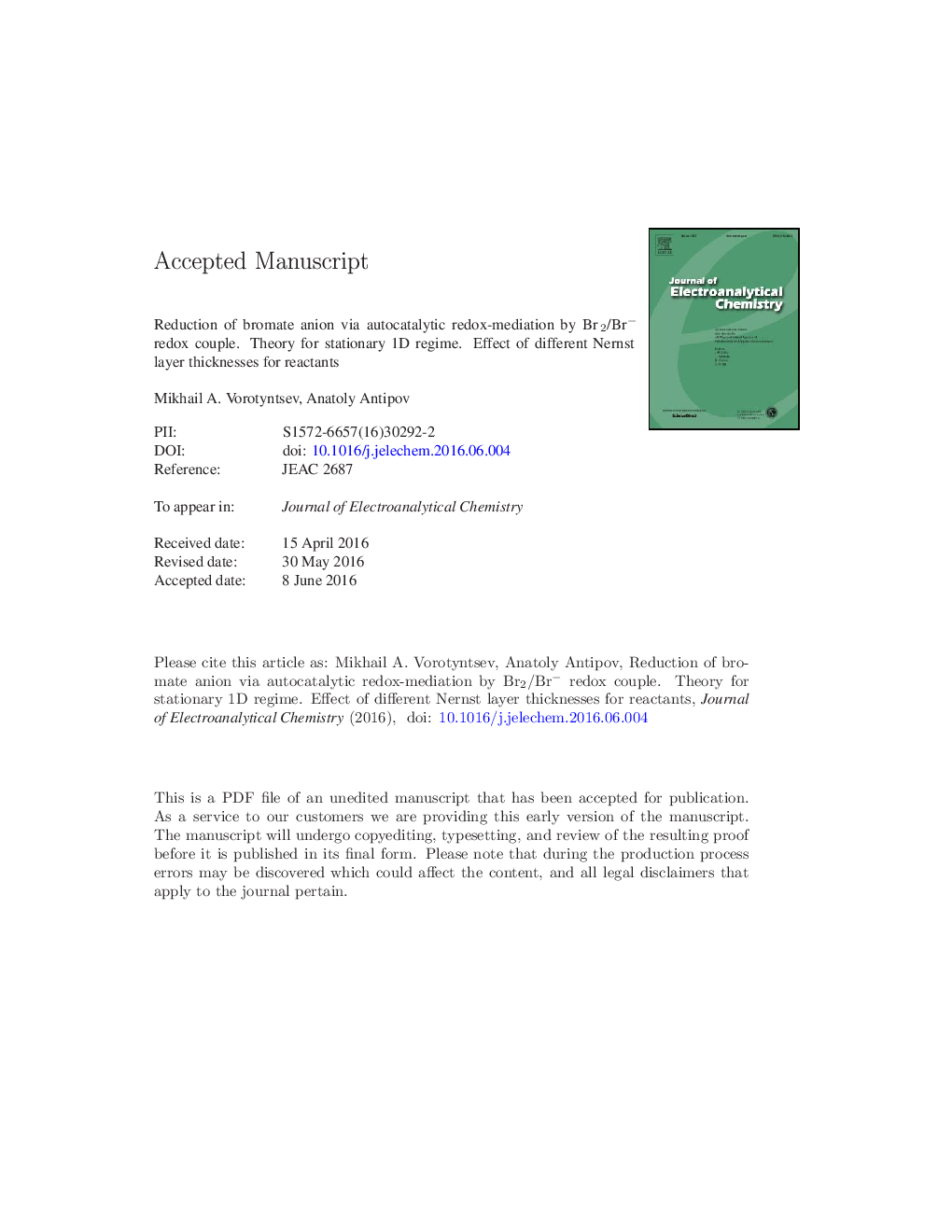| کد مقاله | کد نشریه | سال انتشار | مقاله انگلیسی | نسخه تمام متن |
|---|---|---|---|---|
| 4908315 | 1426596 | 2016 | 14 صفحه PDF | دانلود رایگان |
عنوان انگلیسی مقاله ISI
Reduction of bromate anion via autocatalytic redox-mediation by Br2/Brâ redox couple. Theory for stationary 1D regime. Effect of different Nernst layer thicknesses for reactants
دانلود مقاله + سفارش ترجمه
دانلود مقاله ISI انگلیسی
رایگان برای ایرانیان
موضوعات مرتبط
مهندسی و علوم پایه
مهندسی شیمی
مهندسی شیمی (عمومی)
پیش نمایش صفحه اول مقاله

چکیده انگلیسی
Theoretical analysis has been developed for the reduction process of the non-electroactive bromate anion via a redox-mediating cycle composed of the reversible Br2-to-Brâ transformation at the electrode and of the irreversible (owing to high acidity of the solution) comproportionation reaction between Brâ and BrO3â which regenerates Br2. Owing to the autocatalytic character of this cycle (ECâ³ mechanism) even a tracer amount of Br2 in the bulk solution may result in enormous values of the reduction current compared to the BrO3â diffusion-limited one towards the electrode surface where it is consumed inside a thin kinetic layer by the comproportionation reaction. Unlike the preceding theoretical papers on this process (Electrochim. Acta, 2015, 173, 779; Doklady Phys. Chem., 2016, 468, 37; Russ. J. Electrochem., 2016, 52, in press), this study is based on a more advanced theoretical concept of the Generalized Nernst-Layer Model which takes into account that the difference in the diffusion coefficients of BrO3â, Brâ and Br2 means the non-equality of the diffusion layer thicknesses for these species, as evidenced by the Levich formula for the RDE. Approximate analytical expressions for all characteristics of the system have been derived for two regimes corresponding either to “weak currents” or to “thin kinetic layer”. In particular, the maximal current for the diffusion-limited conditions has turned out to depend on the novel parameter of the model, i.e. on the ratio of the diffusion layer thicknesses for BrO3â and Br2, which in its turn is expressed via the ratio of their diffusion coefficients.
ناشر
Database: Elsevier - ScienceDirect (ساینس دایرکت)
Journal: Journal of Electroanalytical Chemistry - Volume 779, 15 October 2016, Pages 146-155
Journal: Journal of Electroanalytical Chemistry - Volume 779, 15 October 2016, Pages 146-155
نویسندگان
Mikhail A. Vorotyntsev, Anatoly E. Antipov,